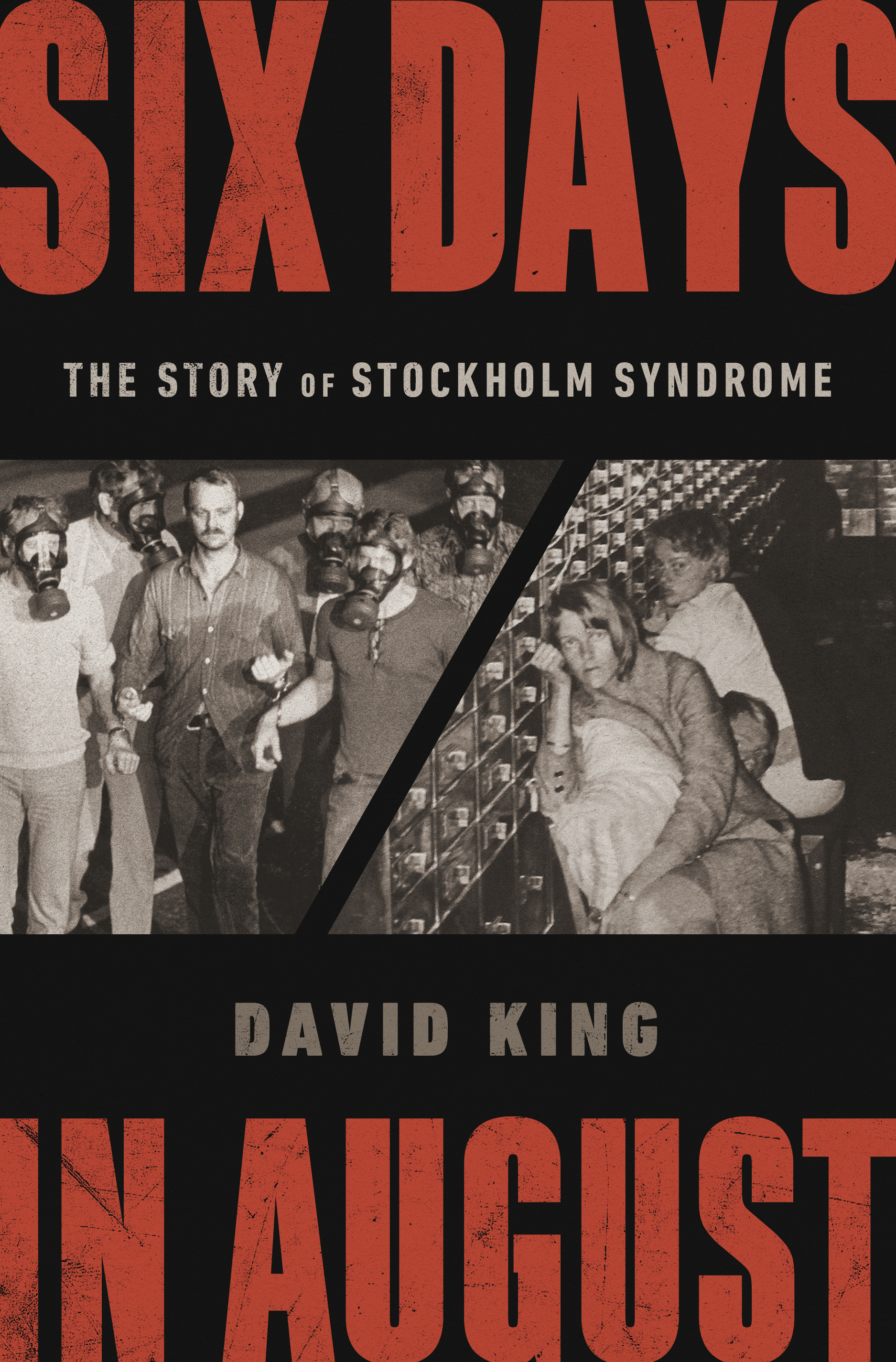
“Come to Sweden,” said the voice on the phone between a swig of rum and a puff on his cigar. “I’ll answer whatever the f-ck you want.”
On the line was Clark Olofsson, one of Sweden’s most notorious criminals of the 20th century. He had long made tabloid headlines for robbing banks, escaping prison and taunting authorities with his eminently quotable interviews, spiced up, as they often were, from his years reading history and philosophy in his cell. Handsome and charismatic, Olofsson had been a counterculture icon in 1970s Sweden. He was, as one reporter put it, “a scruffy Scandinavian mixture of Jesse James and Warren Beatty.”
I had been interested in talking with Clark Olofsson because he had played a prominent role in a crime I was researching. On Aug. 23, 1973, a tall, muscular man had entered a bank in central Stockholm wearing makeup, a ladies’ wig and a pair of sunglasses. He ripped out a submachine gun and fired a round into the ceiling, shouting “The party starts!” He then took hostages and made his demands: He wanted 3 million Swedish crowns (about $4,000,000 today) and Clark Olofsson, who was in prison at the time, to be brought to him.
Police poured into the square outside the bank, followed by reporters, photographers, camera crews and soon also a large crowd of spectators. The crime in progress was going to be broadcast on live television.
Get your history fix in one place: sign up for the weekly TIME History newsletter
Then, to the astonishment of many, Olofsson was in fact brought to the bank and handed over to the gunman, Jan-Erik or Janne Olsson. This was the first of many controversial decisions that the police made, as tensions increased and the situation became more volatile. How could they have released this dangerous criminal into a bank where an erratic gunman was holding employees hostage? The country was mesmerized. Swedish media records show that the event, at its height, captured no less than 73% of the viewing public.
I had first become fascinated with this story when I lived in Sweden in the 1990s and used to walk past the site where the hostage crisis took place on my way to the library where I was researching what became my first book. At that time, the story reminded me of the classic Sidney Lumet film, Dog Day Afternoon, starring Al Pacino. But there were many differences, too, not least in the fact that the Swedish hostage affair ended up drawing in the country’s prime minister Olof Palme and forging a new way to understand the complicated emotional relationship between captor and captive: Stockholm syndrome.
Stockholm syndrome is traditionally defined as the tendency of a hostage to sympathize with, identify with or form powerful bonds with his or her captor. A psychiatrist assisting the Stockholm police, Nils Bejerot, studied the interactions of Olsson, Olofsson and the four hostages, and then outlined the broad parameters of the concept to the press. This theory was later elaborated by psychiatrists, psychologists and hostage negotiators in Sweden and the United States, particularly at the New York Police Department and the FBI. This concept of “terror bonding” would be repeatedly evoked over the years to explain the behavior of victims in high-profile kidnapping and hostage cases from Patricia Hearst to Elizabeth Smart, and it would have a long life too in film, television and popular culture.
But, to my surprise, there were no English-language books on the original hostage crisis that inspired the Stockholm syndrome. So, I decided to look into it further. In the end, I would spend more than three years full-time on these six days in August. I read all the Stockholm police files and court documents about the case, as well as the lavish media coverage in dozens of newspapers and magazines from around Sweden and the world. I watched the Swedish television news broadcasts, including raw footage when the crews left the cameras pointed at the bank or the getaway car, in fear of missing any development in a crisis that could, at any moment, come to an abrupt and violent end.
The Stockholm police, it turned out, had also kept their cameras rolling, from their vantage point inside the bank. They had, moreover, managed to place microphones near the vault, where Olsson, Olofsson, and the hostages had retreated. The record of these remarkable conversations, hour after hour, provided invaluable insight into the forces that drove the events and revealed that there was much more to the Stockholm syndrome than usually depicted—and in fact, the popular conception of what Stockholm syndrome means was not part of the original story.
For me, archival work is always a highlight of the research process. But this time, I also had the opportunity to ask my questions directly to the main participants. Not just Clark Olofsson, but also the gunman, Janne Olsson, who had moved back to Sweden after many years in Thailand. Many other people agreed to talk about their experiences including policemen, journalists and, above all, the hostages who had first been “diagnosed” with the Stockholm syndrome.
At first, my goal was simply to tell a story of what happened back in 1973—a story that, in my opinion, needs to be told. As I dug deeper, however, I realized that this was more than a real-life tale of drama and suspense as young lives hung in the balance. The hostage crisis would lead to police reform, inspire a vigorous debate about the role of the media in society, and, most famously, live on in Stockholm syndrome. The concept spread from a bank in Sweden into the realms of psychology, crisis negotiation and popular culture—but only by coming to terms with its origins can we better understand the real impact of such trauma on the human mind.

David King is the author of Six Days in August: The Story of Stockholm Syndrome, available now from W.W. Norton & Company.
More Must-Reads from TIME
- Why Biden Dropped Out
- Ukraine’s Plan to Survive Trump
- The Rise of a New Kind of Parenting Guru
- The Chaos and Commotion of the RNC in Photos
- Why We All Have a Stake in Twisters’ Success
- 8 Eating Habits That Actually Improve Your Sleep
- Welcome to the Noah Lyles Olympics
- Get Our Paris Olympics Newsletter in Your Inbox
Contact us at letters@time.com